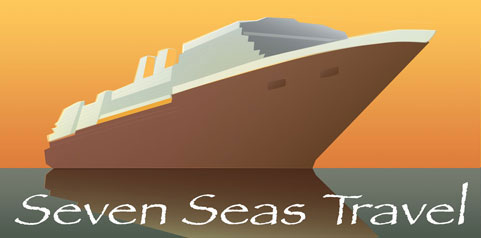A trusted name in travel since 1964

Call or Email us Today!
![]()
[email protected]
LIVE Answering Service 24X7X365
A trusted name in travel since 1964

Call or Email us Today!
![]()
[email protected]
LIVE Answering Service 24X7X365
Call it the Mexico you never knew existed..
Luxury glass box hotels surrounded by beachfront tourist traps are what most Americans envision when thinking of Mexico. Add a dressing of drug lords, petty crime, and corruption and you have Mexico according to accounts written about by the modern media.Thankfully there is more to Mexico than El Chapo and beachfront tourist traps.
To envision this Mexico apart from the common misperceptions and false impressions, you have to go back in time to the year 1519, long before the modern capital of Mexico City existed. In its place was the former capital of the Aztecs, Tenochtitlan . Tenochtitlan was one of the world's leading metropolises of its time, a beautiful white city built on an island in the middle of a lake with a population of over a quarter million people.
When the Spanish conquistadors under the command of Hernan Cortes arrived in the Aztec capital of Tenochtitlan in 1519, they were greeted with honors and adulation by the Aztec Emperor Montezuma . In return, Cortes and his men destroyed the Aztec civilization and annihilated its people. All vestiges of the Aztec empire were done away with in order to erase any memory of Tenochtitlan and its former inhabitants. A few years after the Conquistadors arrived in Tenochtitlan, the Spanish starting building their own monuments and cathedrals, often times with stones stolen from the former Aztec temples and pyramid structures.
Cortes and his gang of invaders might have succeeded in their sinister ploy to smash and bury the Aztec civilization in Tenochtitlan had it not been for the excavation of trenches outside the Cathedral for the Mexico City subway in 1978. At the time of tunnel excavation, a large slab with magnificent bar reliefs that had been smashed and buried was unearthed. Archaeologists soon discovered that the site contained a virtual treasure trove of artifacts belonging to the former Aztec empire.
Adding to the celebratory nature of the occasion was the irony of the name of the archaeologist in charge of the Aztec find, Eduardo Matos Moctezuma. (a version of Montezuma)
As a result of Montezuma discovering Montezuma's former Aztec civilization, the Templo Mayor was established and an entire block in Mexico City was demolished in order to return to Mexicans, the heart of their ancient capital.
Today, you can not only see the former glory of the Aztec empire in Mexico City, but you can also visit the Aztec ceremonial center in Cholula and see the largest pyramid in the world. (By volume). Traveling s few dozen miles north of Mexico City, you will encounter another set of pyramids which so inspired the Aztecs that they gave the sacred location its name, Teotiauacan, or place of the Gods.
At first glance, one might think that the former Aztec people vanished along with their ancient capital hundreds of years ago, but thankfully they have not. Today, you can find a large population of the former Aztec people in Cuetzalan, in the Mexican state of Puebla a few hours east of Mexico City. Speaking the language of Nahuatl, (pronounced Nah-watt) the Aztec/Nahua people converse in a language spoken by more than 1.5 million Mexicans today and the truth is that very few Americans have even heard of it. Truth is however, that most Americans speak some Nahuatl every day and don't even know it. Words like coyote, tomato, mesquite, guacamole, and chocolate are all Nahuatl words. (Yes, the Aztecs invented chocolate).
So the next time you are looking for a different travel experience in Mexico, why not give the Aztecs a try? Call it the Mexico you never knew existed. Be like Montezuma discovering Montezuma and call it, uncovering the hidden treasures of Mexico.